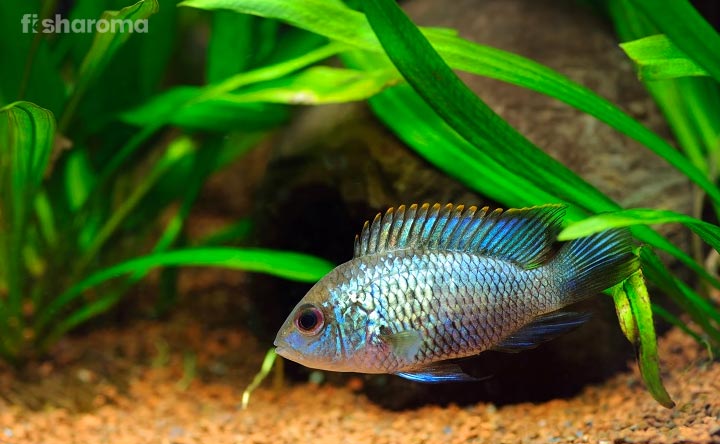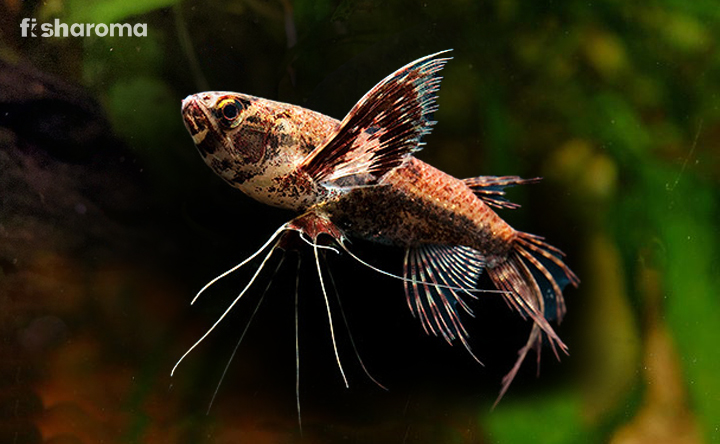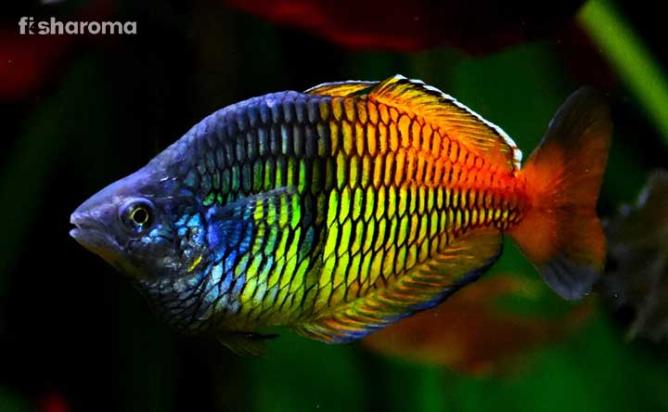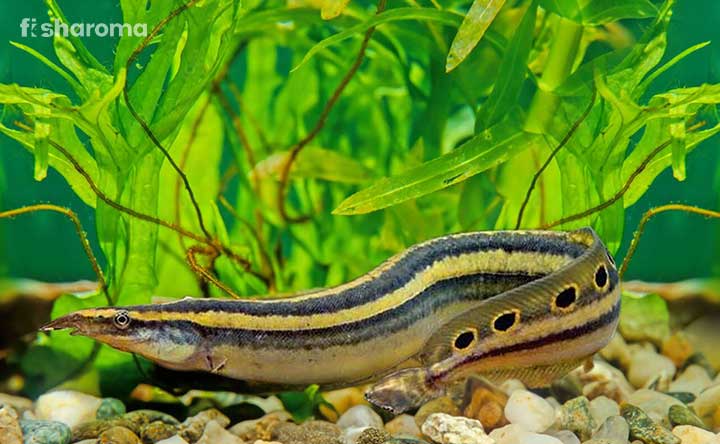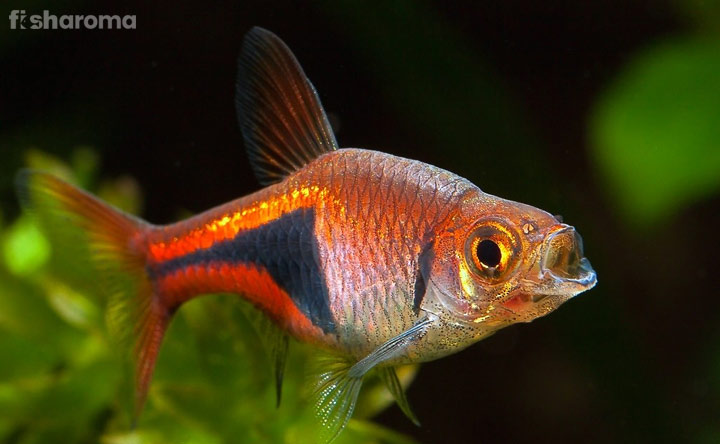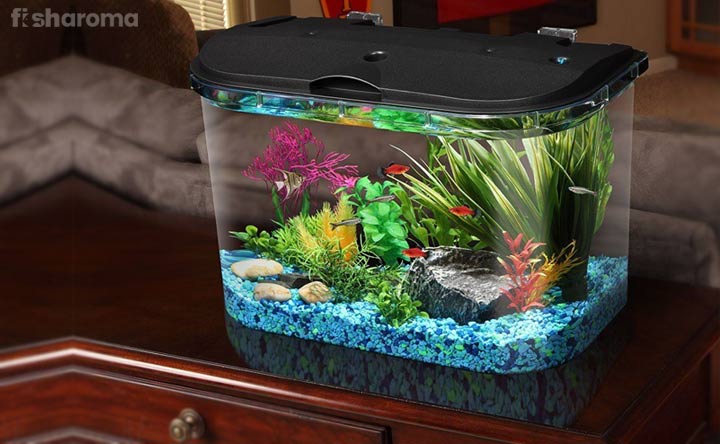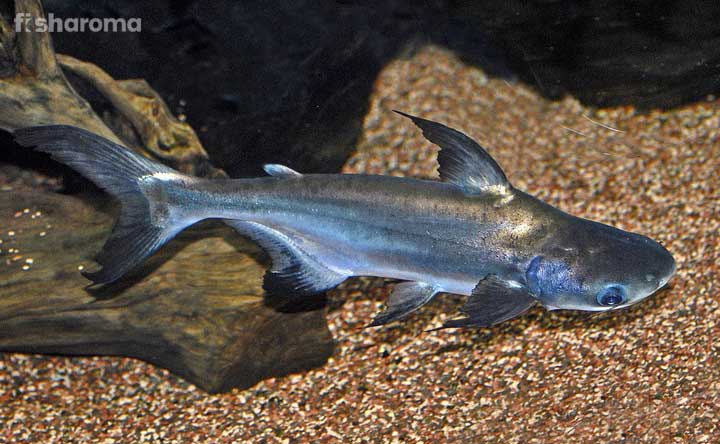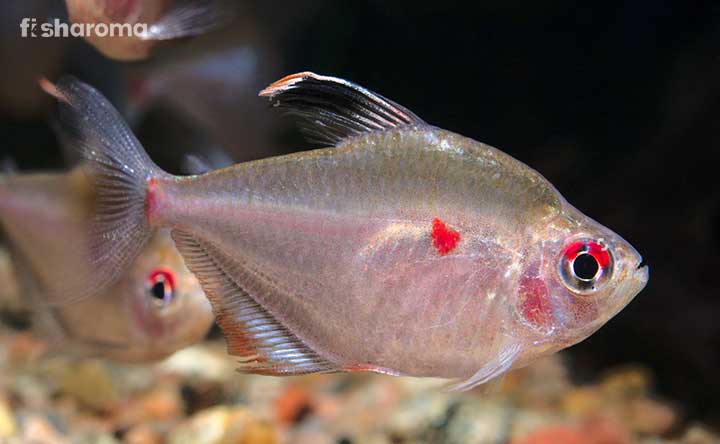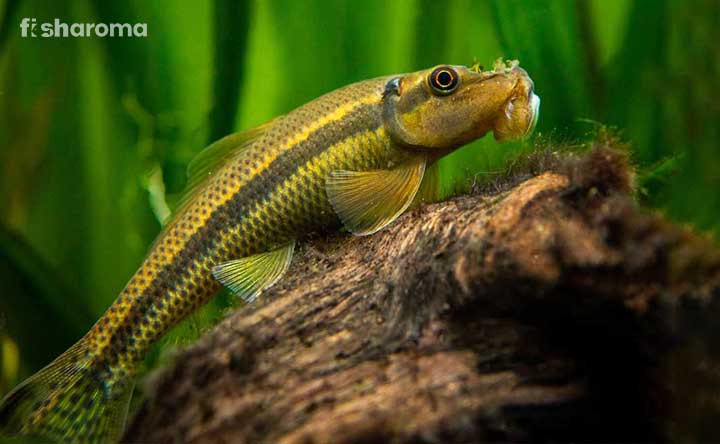Koi Fish – The Compete Care Guide of this Gorgeous Freshwater Pet Fish
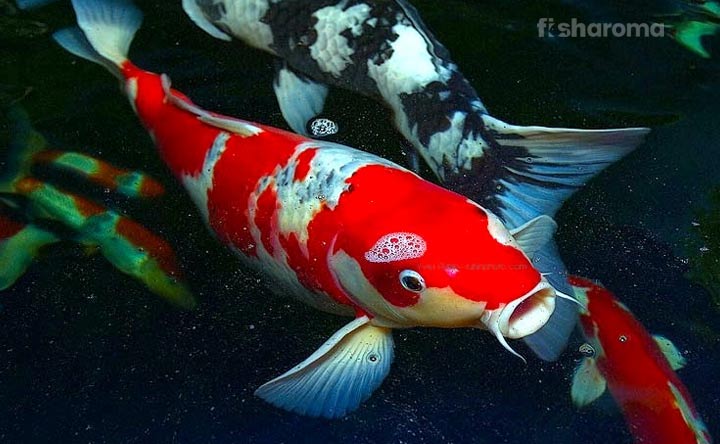
Koi Fish is the domestic version of common Carp found in the deep ponds or small lakes. Keeping a couple of Koi Fish can brighten up your aquarium. Alongside with the aquariums, this fish is also kept in the outdoor garden ponds by some fish enthusiasts. This fish is one of the family members of Goldfish but the care level and nature of both the fish are different. So, go through the care guide of this stunning long-living carp.
Quick Details on Koi Fish
Koi Fish is known as an ornamental fish because of the color and the bright pattern of this species. This fish is used for farming and is also kept in the tank of fish enthusiasts. Before going deep, let’s take a quick look at the facts and features given in the table.
| Scientific Name | Cyprinus carpio |
| Origin | Japan |
| Life-Span | 30-50 years |
| Colors | Yellow, Orange, Golden, White, Bluish Gray, Cream, Red, White, and Black |
| Temperament | Peaceful |
| Size | 24-36” (60.96-91.44 cm) |
| Diet | Omnivores |
| Family | Cyprinidae |
| Compatibility | With Other Carps, Amphibians and Game Fish |
| Tank Size | 250 gallons |
| Care Level | Easy-Intermediate |
Overview
Koi Fish are from the same line of species as that of Minnows and Carps. The Japanese meaning of Carp is ‘Koi.’ The common Carps can live up to 20 years but Koi can live up to 50 years. In the ancient era, these fish were kept in the water garden or large ponds of the backyard of palaces in Japan and other Asian regions. The standard varieties of Koi cost $50-$80 and the unique types cost $200-1000+.
Origin of Koi Fish
The breeding of Koi began in the 19th century in Japan in the rice gardens and large ponds. This fish was developed from Amur Carp in 1820 in Japan. This cold-water fish is also known by other names such as Nishikigoi and Jinli.
Appearance of Koi Fish
The 24-36” (60.96-91.44 cm) Koi Fish is found in several colors such as cream, red, blue, black, white, and yellow. The barbels of Koi are found on its upper lip and the sides of the jaw. Its snout is round and it has toothless jaws. Most of the Koi have a calico pattern on their bodies. The female fish is rounder and larger than the males. Their fins are rounded and short.
Types of Koi Fish
There are several varieties of Koi Fish, and all the breeds have different colors and patterns on their bodies. The nature and behavior of every fish are similar but their appearances do not entirely match each other. Take a look at a few common varieties:
1. Gold Koi Fish
Ogon is a Gold Koi Fish, which is usually seen in orange, silver, and golden color. There are golden markings over the body of this fish. The scales of this fish shine like the golden coins.
2. Butterfly Koi Fish
Another name of this Goldfish is Dragon Koi because of its long caudal and pectoral fins. This fish is highly prized and valuable to aquarists. This fish is found in rainbow-shaded multicolor, so it is known as Butterfly Koi.
3. Black and White Koi Fish
The black and white marks and spots on the body of Shiro Utsui Fish is the reason that it is known as Black and White Koi. Some of these fish have a split-head pattern with white patches on one side part of the head and black on the other side of the head.
4. Kohaku
This is one of the common Koi Fish usually seen in the water gardens, ponds, or aquarium of fishkeepers, and it is native to Japan. This Koi is white with red and orange markings on its body. Tancho Koi is also a variant of Kohaku Koi which has a single red spot on the topmost part of its head.
5. Taisho Sanke
Taisho Sanke is also known as Sanshoku, and it has three colors – red, black, and white. Usually, this fish has a white body with red markings. There are two colors on its head – red and white. The pectoral fins of this fish are white with few markings.
6. Asagi
This fish has a blue-colored marking on its body. Its net-like pattern on the top of the head makes it different from other Koi breeds. Asagi has red and calico color splashed on its body. This fish has orange-red coloration on its gill plates and fins. The red coloration spreads upward from the bottom of the body of this fish.
7. Shusui
This Koi is quite similar to Asagi, but its body is scaleless, and due to the absence of the scales, it looks a little bit different from other fish. The color of the head of Shusui is pale white and blue.
8. Koromo
Some Japanese fishkeepers say Koromo Koi Goromo. This is a hybrid fish. Its has an orange-red pattern on its body and its base is white. The scales of this fish are red. There are three types of Goromo Koi – Budogoromo, Sumigoromo, and Aigoromo.
9. Kawarimono
This is a large and fast-growing Koi that has a white body with red or black patches. This Goldfish is also known as Dragon Fish because of the white markings on its body. The scales of this fish are bluish and grayish.
10. Goshiki
Goshiki Koi is available in five colors – white, black-blue, red, red-orange, and silver. This fish has a net-like pattern on its body. It was first found in China and now it is globally spread.
11. Hikari Muji
This single-colored Koi has a shiny appearance and metallic scales. There are different types of Hikari Muji Koi such as Yamabuki Ogon, Orenji Ogon, Kin Matsuba, Aka Matsuba, and Gin Matsuba.
12. Hikari Moyo
This fish is umbrella-shaped, and its body is the metallic color. The shimmering skin and combination of striking patterns make it stunning and aesthetically appealing in your tank. There are different variants of Hikari Moyo such as Hariwake, Yamatonisiki, Kujaku, and Sakura Ogon.
Temperament of Koi Fish
Koi Fish is a peaceful fish that prefer living with a shoal of fish. They form a school of 5-15 fish in a pond. So, you can keep 5-7 Koi and other passive fish in a tank. This fish can swim at the bottom and middle level of water. Koi is an active swimmer, so don’t keep it with slow swimmers. This fish searches for its food by digging burrow into the sediment of the roots of the plans and munching the plant seeds. Its mouth is bigger and it eats like a vacuum by taking big gulps. This fish can filter out mud and dirt.
Suitable Tankmates for Koi Fish
Koi Fish are usually found in streams, ponds, and lakes, and its peaceful nature makes it one of the adaptable fish of freshwater tanks. Koi never harm and harass any fish. The following are some of the ideal tankmates of Koi Fish:
- Perch
- Puffer Fish
- Bass
- Catfish
- Goldfish
- Grass Carp
- Sunfish
- Frog
- Bluegill
- Salamander
Unsuitable Tankmates
Avoid keeping aggressive predator fish with Koi because it is a shy and peaceful fish, and it cannot fight with any aquatic species. Some unsuitable tankmates are:
- Silver Arowana
- Oscar Fish
- Rainbow Shark
- Flowerhorn Cichlid
Compatibility of Koi Fish
Koi Fish prefers living in a group, so you can keep 5-15 Koi in your fish tank.
Dietary Requirements for Koi Fish
Koi Fish has a huge appetite and its diet is quite similar to Goldfish. It is an omnivore fish that can consume both vegetative and meaty foods. You should feed critters and vegetables to Koi . You can mix commercial and natural foods and feed Koi. The foods must have high protein that will help in enhancing the color of the fish. Feed them up to three small portions of food twice a day. You can feed your pet fish with an automatic fish feeder like MOGOI Automatic Fish Feeder that will help you set food twice a day. Some appropriate foods that you can feed your pet fish are:
- Algae
- Insect Larvae
- Zooplankton
- Water Fleas
- Brine Shrimp
You can also feed some readymade pellets, sinks and frozen foods such as:
Habitat and Tank Requirements for Koi Fish
This fish is native to the ponds, streams, and lakes of Asian regions and Europe. This fish is found at the muddy bottoms of the water which is under minimal flow. It is usually active in dawn and dusk. It is not hard to replicate these conditions in your fish tank or your garden pond. Take a look at a few factors for setting its home in your residence.
Tank Size
Koi needs about 250 gallons of water to live. If you are keeping a school of large Koi , then up to 1000 gallons tank is required for this fish. If you are creating an artificial pond in your house, then remember its depth should be at least 6 feet, and it should include both deep and shallow areas.
Ornaments
Koi Fish don’t require highly ornamental tanks. Just try to adorn the tank with the natural ecosystem by planting Water Lilies, floating Pondweed, Water Hyacinth, Cattails, Duckweed, and Pickerels. Some fishkeepers plant trailing plants and Willows in the water garden of Koi . You can also arrange some caves for this shy fish. Some rocks and gravels in the aquarium are usually kept so that the fish can lay eggs or take rest on the gravels. If you are making a pond in your garden, then try to give rubber lining and muddy bottom substrate at the bottom of the pond.
Filter
Koi Fish is not a messy fish like Goldfish, so a standard filter is enough for its aquarium.
Lighting
Standard lighting is enough for the tank of Koi because it does not require bright light.
Water Type for Koi Fish
We all know that water acts as a necessary part of the life of every aquatic animal. So, always maintain the hygiene of the pond or the aquarium water for the health and well being of Koi. Take a look at a few factors while setting the tank water for this fish.
Temperature
This fish prefers living in a moderate-water tank, which is neither warm nor cold. So, the water temperature of the tank of Koi should be 74-86°F (23-30°C). During winter, keep a heating system in the tank which will prevent freezing.
pH Level
The pH level in the tank of Koi should be 6-9. You can also use crushed limestone to maintain the pH level of the water in the tank or the pond.
Hardness
The hardness of the water in the tank of Koi should be 9-18 dGH.
Cleaning Method
It is necessary to maintain the hygiene of the tank or the pond where the Koi Fish are kept. Use a soft brush and lukewarm water to clean the aquarium of Koi. Spread lime powder in your fish pond to maintain the hygiene and keep the water clean. Also, keep some algae-eaters in your pond who will consume the algae and keep your pond clean.
Replacement Procedure
It is not possible to change the water of the pond, but you can replace 15% of the water of the tank every week or 30% of water monthly. When you keep a fresh batch of water, check the temperature, pH level and hardness of the water.
Breeding Process of Koi Fish
You will require a separate tank for the breeding of Koi, where the male and female will mate and spawn. You can give hormone injections if you are encouraging fast-breeding or you can also allow the natural breeding process.
This fish become sexually mature between 2-5 years old, and the best breeding season of this fish is spring. Keep 2-3 males for every female in the tanks. The large and old female fish are the best spawners.
When you are encouraging natural breeding, keep the temperature between 64-72°F (17.77-22.22°C). Feed both natural and commercial foods to the fish when they lay eggs. You can feed the females three times a day when they are about to spawn.
The female fish lay eggs in the shallow water vegetation and the males fertilize those eggs. After the fertilization process, keep the eggs in the incubation tank. The eggs will hatch between 3-4 days. Once the eggs hatch, feed them small Zooplankton and Larval Brine Shrimp. When they become mature, you can keep them with their parents.
Diseases of Koi Fish with Intervention
Koi Fish is not a delicate fish because it is hardy and adjustable. However, keeping them in poor water conditions and with unsuitable tankmates can lower their survival rate. If it is infected 80% with any disease, then you cannot save it. Some common diseases of this fish are:
- KHV or Breathing Infection
- Swim Bladder Disorder
- Ich
- Fish Lice
- Ulcer
To protect your pet fish from these diseases, clean the water of the tank weekly, check the filter twice every week, feed nutritious foods and add right tankmates in its tank.
This fish is not only an excellent choice for your aquarium but it is also a great pet fish to keep in your garden pond. We hope that the above care guide will help you to take care of your pet Koi.
Interesting Facts
- Japanese believe that Koi is the symbol of love, success, wealth, prosperity, career, and good fortune, so they gift this fish to their friends and loved ones.
- Only 50% of fertilized eggs of Koi survive after spawning.
- Koi and Goldfish are closely related, so both of them can mate with each other and produce sterile offspring.
- Koi swims at the bottom of the water in the winter season and remain dormant during that time.
Acquire Information about the Fish Breeds which Looks Similar to Koi
Many fish breeds look similar to each other because of the colors and the patterns. Their nature may vary from one another. Let us know about the care guide of some similar-looking fish to Koi.
- Comet Goldfish: Most of the variants of Goldfish are quite similar looking to Goldfish. But Comet Goldfish matches to a great extent. It is also a family member of Carp like Koi. If you want to know more about it, then take a look at its care guide.
- Honey Gourami: The beautiful honey-orange color of this Gourami fish attracts fishkeepers. This fish also looks quite similar to the orange-shaded Koi. Know about the care guide of Honey Gourami, if you want to see it in your fish tank.

